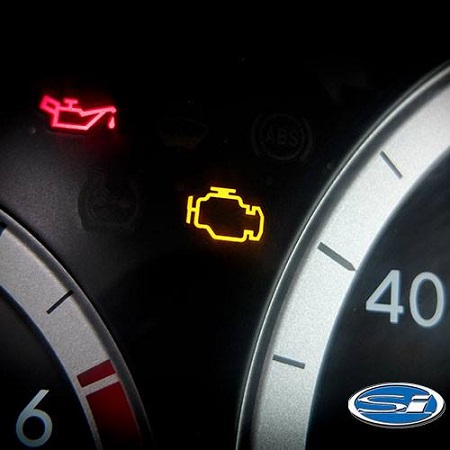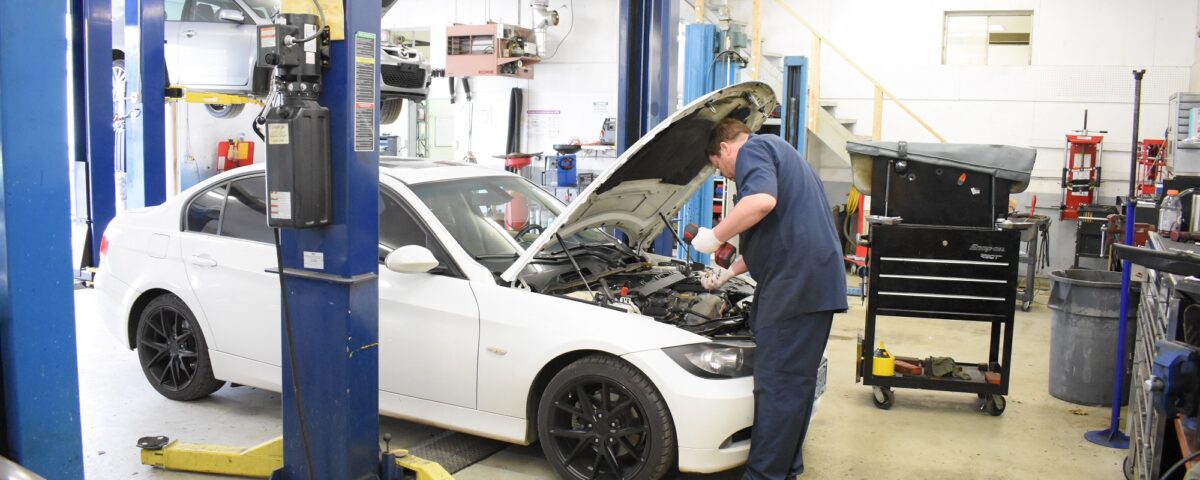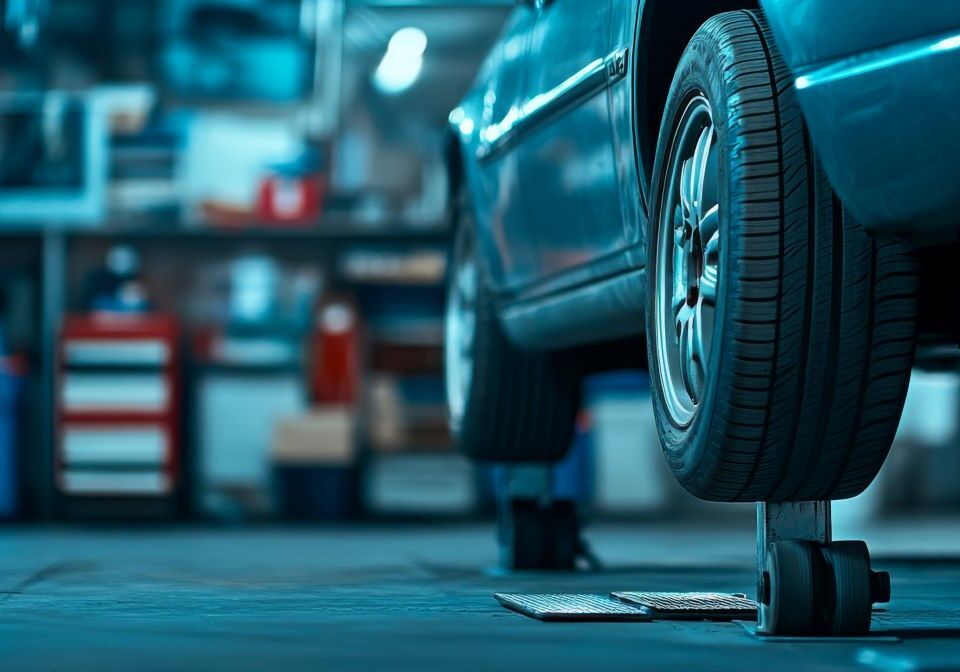
Tips on Prolonging the Life of Your Car
November 2, 2022
Risks Associated With DIY Auto Repair
December 19, 2022A check engine light is one of the most common lights that appear on a car’s dashboard. It is essential to know what it means and what could be the potential consequences if it is not addressed. Interestingly, some drivers barely understand the meaning of a check engine light, let alone what it means. This post will explain everything you need to know about a check engine light to bring you up to speed.
What Is a Check Engine Light

It is a warning indicator on your instrument cluster. It usually appears as a yellow or red light in the shape of an engine. The light comes on when there is an issue with the vehicle’s emissions control system, among other problems. Some manufacturers may use the illuminated phrase “Service Engine Soon” such as many BMWs, or use phrases such as “Check Engine” on earlier model Toyota’s.
What Does It Mean When the Check Engine Light Comes On?
The check engine light is an important indicator of vehicle health. It comes on when the onboard diagnostics system detects a problem in the emissions, ignition, fuel, intake, and exhaust systems. While it could be something as simple as a loose gas cap or faulty oxygen sensor, it could also indicate a more serious issue like a faulty catalytic converter or engine timing fault. Ignoring the check engine light could lead to further damage and decreased vehicle performance, so it’s important to have it checked out as soon as possible.
When your vehicle’s CEL (check engine light) comes on, the vehicles computer forces the engine into what is called ‘Closed Loop’. Which means the vehicle no longer takes into account all monitors such as manifold pressure, air temperatures, etc. And it will no longer have fuel trim adjustments that are unique to your exact driving conditions.
Solid vs. Flashing Check Engine Light Meaning
Usually, when the light appears on your dashboard, it is either solid or flashing. If it is solid, the problem is likely minor enough for you to safely drive to repair facility, and you can continue driving short distances. However, if the light is flashing, the problem is more serious, and you should pull over to the side of the road and turn off the engine. Do not continue driving with a flashing check engine light, as it could damage your engine.
What Causes the Check Engine Light to Come On?
Several issues may lead to your light turning on. Some of the main reasons include the following:
Engine Problems
If your car’s engine is misfiring, it can cause the check engine light to come on. This usually happens when there is an issue with the spark plugs or ignition coils. A control module uses various sensors to keep track of the engine’s performance. When a problem is detected, the light is turned on.
Transmission Problems
Another common reason for the light to come on is transmission problems. This can be caused by several issues, such as a failing torque converter or a faulty solenoid. Though this issue is seen by the vehicles TCM (Transmission Control Module), it will typically send the info to the Engine Control Module which can translate to a Check Engine warning light.
Oxygen Sensor Issues
The oxygen sensor measures the amount of oxygen in the exhaust fumes. If it senses too much or too little oxygen, it will trigger the check engine light.
Catalytic Converter Issues
The catalytic converter is responsible for converting harmful emissions into less harmful ones. If it is not functioning correctly, it can cause the light to come on.
Modules and Sensors Problems
There are a variety of modules and sensors in a car’s emission control system. If engine related modules or sensors are not working properly, it can trigger the light to come on.
Ignition System Problems
The ignition system is responsible for igniting the air-fuel mixture in the engine. If there is an issue with it, it can cause the check engine light to come on.
What Are the Potential Consequences of Ignoring a Check Engine Light?
If the check engine light comes on and it is ignored, the consequences can be severe. The emission control system is responsible for reducing harmful emissions from the vehicle. If there is a problem with the system, it can cause the car to emit higher pollution levels. Additionally, ignoring a check engine light can further damage the vehicle and potentially void the warranty. Timing component failures can be catastrophic and will almost always cause a check engine light. If you continue to drive with timing failures, it will eventually cause catastrophic failure to your engine.
Is It Safe to Drive When the Check Engine Light On?
If the check engine light is on, it is best to get the vehicle checked by a mechanic as soon as possible. In some cases, if you need to drive the vehicle, it should be safe. However, if the light is flashing, it indicates a more serious problem, and the vehicle should not be driven until a mechanic has checked it.
What to Do If the Check Engine Light Comes On?
If the check engine light comes on, the best course of action is to take the vehicle to a mechanic and have it checked. They will be able to hook up a diagnostic tool and see the engine fault is for a critical failure. It is important to remember that rarely does the diagnostic computer trouble shoot the exact issue, but instead points to the specific system that is malfunctioning, and it is in the vehicles best interest to give the technician time to properly diagnose/figure out what is causing the light to come on. Once they make an accurate diagnosis, they can conduct any necessary repairs. Additionally, they may be able to reset the light if a minor issue triggers it.
How Do I Avoid the Check Engine Light Coming On?
You can do a few things to avoid the check engine light coming on. First, make sure to keep up with regular maintenance and have your car checked by a mechanic when needed. Additionally, be aware of any potential issues that could trigger the light, such as a loose gas cap or leaking fluids. If you take care of your car, it should help avoid the check engine light coming on.
We Offer Comprehensive Auto Repairs!
Steve’s Imports is your local, one-stop shop for all your auto repair needs! We offer a wide range of repairs and services, from oil changes and engine repairs to looking at your check engine light in Clackamas. Our experienced mechanics are here to help keep your car running smoothly. Contact us today to schedule an appointment at your local auto repair shop!
Here are some related services we offer:
- Auto mechanical repairs
- Automotive repair
- Simple checks for check engine lights
- Diagnostic equipment to check your engine light
- Brakes and brake repair
- Clutch repair
- Transmission repair
- Comprehensive engine repair services
Check out our website, Steve’s Imports, on Google!


